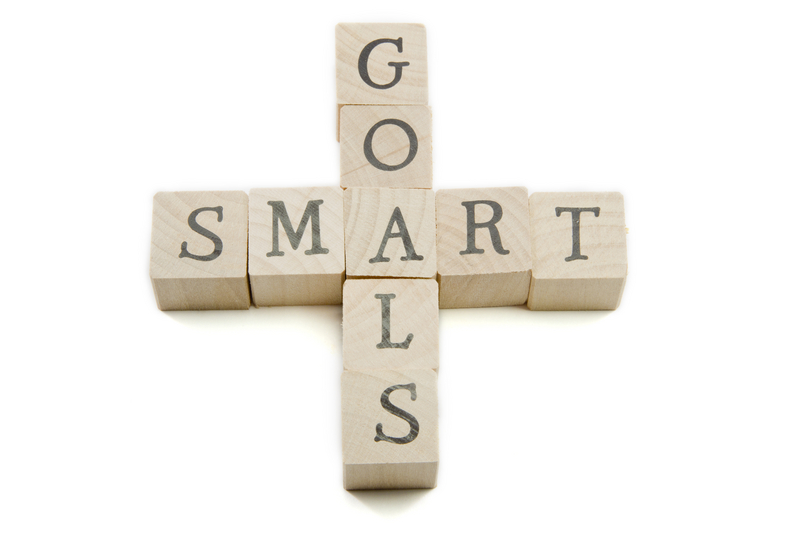
Hello! Let me be the first (or more likely, the 181st) person to welcome you to a new year! Let’s just all agree that 2015 is going to be a good one despite the crushing disappointment of not having hoverboards like Back to the Future II promised us, okay?
As we all get back to work and turn to a fresh page in our new calendars, we have to recognize the end of the Buffer Week for New Year’s resolutions. You know what I’m talking about…those glorious days after the start of the new year when you’re still contemplating your resolutions or that you’re using to put off actually getting started on them. I know I’m not the only one that does this. Let’s accept it, embrace it and move on because it’s time to buckle down and get cracking!!
Before setting any goals for 2015, take a look back at how you fared with what you said you wanted to achieve in 2014. I did. It wasn’t pretty. If you managed to stick to your goals, bravo! If you missed the mark as badly as I did, we are among the vast majority, as only 8% of Americans are successful in keeping or achieving their resolutions.
Well, hey! It’s a new year and we all can have a new start. For those of you who met your goals, lay out some new ones! For those of us who were less successful on that front, I hereby grant us a do-over. You’re welcome.
If you had goals you didn’t meet, it’s important to pinpoint where you went wrong. After all, how can you fix a problem without identifying it? It didn’t take long to figure out where I went wrong with mine. They were vague, mushy and nothing was built in to hold ME accountable. This year I am marching them straight back to the drawing board and making sure each goal I set is either SMART or CLEAR.
The SMART concept lists five criteria that goals should meet (specific, measurable, attainable, relevant, time-related or time-bound). When introduced in the 80’s the authors may have intended for this method to be applied to organizational goals and objectives, but the principles work just as well for personal goals.
Here are some important things to think about for each of the SMART criteria as you’re finalizing those resolutions:
- Specific: Answer all of the favorite ”W” questions (and the one “H”) when you’re setting goals: who, what, when, where, why, and how.
- Measurable: How will you measure success? What will you do to keep track of your progress?
- Attainable: Push your boundaries but don’t set yourself up for failure.
- Realistic: Make sure the goal itself, the plan you’ve put in place, and the timeframe you have given yourself are reasonable for what you want to achieve.
- Time-related: Set check points and deadlines.
Since being introduced, SMART goals have become something of a standard for goal setting. If you set goals using the SMART method, you can rest assured you have well-defined goals with a clear path to success, but it’s not your only option.
Last weekend while thinking about goals and resolutions, I came across another goal setting acronym that I’ll share for your consideration: CLEAR.
Adam Kreek, a former Olympic rower and current motivational speaker, is a proponent of CLEAR goals. He believes goals should be:
- Collaborative – Teamwork makes the dream work.
- Limited – Just like when you’re preparing a presentation, consider scope when setting your goals.
- Emotional – Make your goals something you really care about.
- Appreciable – Baby steps are good. Apply the to-do list trick (build in smaller, achievable tasks that you can check off quickly to feel more productive).
- Refinable – Stuff happens. Don’t be so rigid in your goals that any misstep completely derails you. You can still be successful, but be ready to adapt to your situation.
There are two elements in this one that I really like (spoiler alert: they’re collaboration and emotional investment). As I mentioned before, one place where I fell short last year was failing to build in any sort of mechanism to hold myself accountable; I think the Collaborative element of a CLEAR goal would solve this problem. The way you choose to collaborate with others isn’t set in stone, so figure out how you want to involve others in your plan. SMART goals certainly have room for collaboration, but it’s helpful to have it CLEARly (see what I did there?) spelled out in Kreek’s method. This could be a key component to your success!
Personal goals are inherently more emotional than setting project goals at work, but having an investment in anything you are working on is key. If you don’t have a connection to what you’re trying to achieve, you’re going to find it easier to let things fall through the cracks or make excuses. Then we’ll have to have this same chat again next year.
Whether you prefer your resolutions to be SMART, CLEAR (and to clarify, they should be both smart and clear), or something else entirely, really think about what you want to achieve and how you want to achieve it. Spell it out from start to finish and then get going. Who knows, maybe if someone had set SMARTer or CLEARer goals many moons ago, we would all be going to work on our hoverboards today.
Mackenzie Wiley is part of the GovLoop Featured Blogger program, where we feature blog posts by government voices from all across the country (and world!). To see more Featured Blogger posts, click here.





I second the motion for hoverboards.
Hoverboards for everyone!
Neat! Hadn’t heard of CLEAR method but big fan of SMART
It was new to me too, but I definitely like some of the added elements.